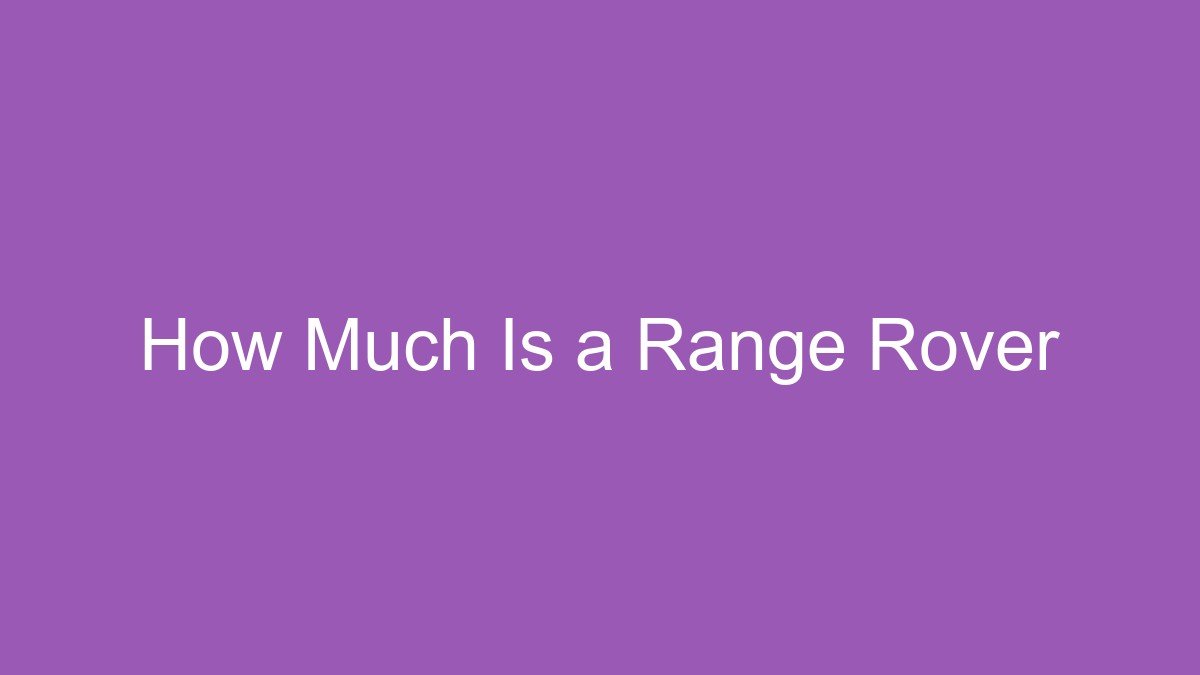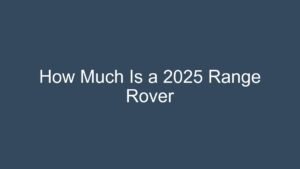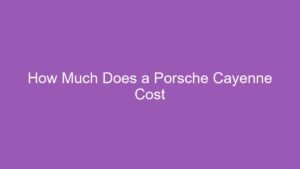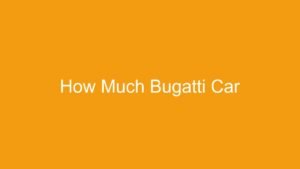
Contents
- How Much Is a Range Rover? Your Ultimate Guide to Understanding the Price Tag
- FAQ
How Much Is a Range Rover? Your Ultimate Guide to Understanding the Price Tag
Dreaming of owning a Range Rover? You’re not alone! These iconic vehicles represent the pinnacle of luxury, capability, and refined style. But as you start to explore the idea, one of the first questions that pops up is almost always, “How much is a Range Rover?”
The answer, as you might expect for a premium vehicle, isn’t a simple “X dollars.” It’s a spectrum, influenced by a multitude of factors. Think of it less like buying a fixed-price item and more like commissioning a bespoke suit – the base material is exquisite, but the tailoring, fabric choices, and embellishments all contribute to the final cost.
This detailed guide will break down everything you need to know about the cost of a Range Rover, from initial purchase price to the true cost of ownership, helping you navigate your options with confidence.
🛒 Recommended Product
The Big Picture: New Range Rover Starting Prices
Let’s start with a general range for brand-new models. It’s important to understand that the Range Rover family isn’t just one vehicle; it’s a lineup of distinct models, each catering to different needs and budgets, from the compact and stylish to the full-size ultra-luxury SUV.
As a very rough guide, you can expect entry-level models in the Range Rover family to start in the mid-$50,000s to $60,000s. However, the flagship Range Rover and its higher-performance or ultra-luxury variants can easily begin in the low-$100,000s, quickly climbing towards $150,000 to over $200,000 for top-tier trims and extensive customizations.
Remember: These are starting prices. The final figure you pay will depend heavily on the choices you make, which we’ll explore next.
Understanding the “Why”: Key Factors Influencing the Price of a Range Rover
To truly answer “How much is a Range Rover?”, you need to understand the variables that drive the price up or down. Think of this as your step-by-step guide to decoding the sticker price.
Step 1: Choose Your Model Type
The Range Rover brand encompasses several distinct vehicles, and each has its own pricing tier:
- Range Rover Evoque: The most compact and often the most accessible model, known for its stylish design.
- Range Rover Velar: A sleek, minimalist, and mid-size SUV that bridges the gap between the Evoque and the Sport.
- Range Rover Sport: A sportier, more dynamic take on the classic Range Rover, offering a blend of performance and luxury.
- The Flagship Range Rover: The ultimate luxury SUV, offering unparalleled refinement, space, and capability. This is often the most expensive model in the lineup.
- Defender (while not a “Range Rover,” it’s from the same family): For those seeking rugged capability with modern luxury, the Defender offers a different pricing structure and appeal.
The model you choose will be the biggest determinant of your base price.
Step 2: Select Your Trim Level or Package
Once you’ve picked a model, you’ll then choose a trim level. These packages offer varying levels of features, materials, and engine options. Common trim levels include:
- Standard/Base: The entry point for each model, still well-equipped but with fewer premium additions.
- SE (or similar mid-tier): Adds more features, technology, and often more powerful engine options.
- HSE (or similar higher-tier): Steps up to more luxurious materials, advanced driver-assistance systems, and higher-performance engines.
- Autobiography / SVAutobiography (or equivalent high-end trims): The pinnacle of luxury and performance for the flagship models, featuring bespoke interiors, the most powerful engines, and exclusive design elements.
Moving up through trim levels can add tens of thousands of dollars to the price.
Step 3: Engine Options
Many Range Rover models offer a choice of engines, including:
- Ingenium Mild-Hybrid (MHEV) or Plug-in Hybrid (PHEV) powertrains: These often offer a balance of performance and fuel efficiency, and PHEV options can sometimes be eligible for tax credits (check local regulations).
- Turbocharged or Supercharged Petrol (Gasoline) engines: Ranging from powerful V6s to formidable V8s.
- Diesel engines (where available): Known for torque and fuel economy.
More powerful or advanced engine options typically come with a higher price tag.
🛒 Recommended Product
Step 4: Optional Features and Customizations
This is where you can truly personalize your Range Rover, and where the price can really climb. Options can include:
- Luxury Features: Panoramic sunroofs, premium sound systems (like Meridian), advanced infotainment upgrades, heated and ventilated seats, massaging seats, soft-close doors, head-up displays.
- Driver-Assistance & Safety Packages: Adaptive cruise control, lane-keeping assist, surround-view cameras, parking assist.
- Exterior Enhancements: Larger or unique wheel designs, special paint finishes (some premium paints cost thousands), black exterior packages, deployable side steps.
- Interior Upgrades: Different leather types, wood or metal trim finishers, custom stitching, rear-seat entertainment systems.
- Capability Enhancements: Advanced off-road systems, configurable terrain response, towing packages.
Each selected option will add to the final cost, often by hundreds or thousands of dollars per item.
Step 5: Destination Charges and Dealer Fees
Regardless of how you configure your vehicle, you’ll also encounter:
- Destination Charge: A fee charged by the manufacturer to transport the vehicle from the factory to the dealership. This is typically non-negotiable and standard for all buyers.
- Dealer Preparation Fees: Some dealers charge for preparing the car for delivery.
- Sales Tax, Registration, and Licensing Fees: These vary by state and local jurisdiction and are calculated on the total purchase price.
Always ask for a transparent breakdown of all fees.
Step 6: Location and Market Conditions
Prices can sometimes vary slightly by region due to different demand, inventory levels, and local incentives or taxes.
Considering a Used Range Rover
For many, a used Range Rover offers a compelling value proposition. Luxury vehicles, including Range Rovers, tend to depreciate significantly in their first few years. This means you can often acquire a well-equipped, relatively new model for considerably less than its original sticker price.
- Used Price Range: This is even wider than new prices. A well-maintained Range Rover from 3-5 years ago could range from $30,000 to $80,000+, depending heavily on the model, trim, mileage, condition, and market demand.
- Key Factors for Used:
- Model Year: Newer generally means more expensive.
- Mileage: Lower mileage usually commands a higher price.
- Condition: Excellent condition with a clean title and service history is paramount.
- Trim Level & Options: A fully loaded higher trim will still be more expensive than a base model, even used.
- Service History: A complete and documented service history is crucial for a used Range Rover.
While the initial purchase price might be lower, be prepared for potential maintenance costs on an older luxury vehicle.
Beyond the Sticker Price: The True Cost of Range Rover Ownership
The purchase price is just one part of the equation. To truly understand how much a Range Rover costs, you need to factor in the ongoing expenses. Ignoring these is a common mistake that can lead to financial strain.
- Insurance: Due to their luxury status, repair costs, and performance, Range Rovers typically have significantly higher insurance premiums than average vehicles. Get quotes before you buy.
- Maintenance and Repairs: Range Rovers are precision-engineered vehicles.
- Scheduled Maintenance: Follow the manufacturer’s recommended service schedule. These services can be more expensive than for a non-luxury vehicle due to premium parts and specialized labor.
- Unexpected Repairs: While generally reliable, if something does go wrong, parts and labor for Range Rover repairs can be costly. Consider purchasing an extended warranty for added peace of mind, especially for used models.
- Fuel Costs: Many Range Rover models are powerful SUVs and, as such, can be quite thirsty, often requiring premium fuel. Factor in your expected mileage and current fuel prices.
- Depreciation: While you might get a good deal on a used one, it’s worth noting that luxury vehicles, in general, tend to depreciate faster than their mainstream counterparts, especially in the first few years.
- Financing Costs: If you finance your purchase, the interest paid over the life of the loan will add a significant amount to the total cost.
Here are some practical steps to help you find the right Range Rover for your budget:
- Research Thoroughly: Spend time on the manufacturer’s website to build different models and compare trim levels. Explore online forums and reviews (without focusing on specific product opinions) for common ownership insights.
- Set a Realistic Budget: Don’t just consider the purchase price. Factor in insurance, fuel, maintenance, and potential repair costs when determining your total budget.
- Consider New vs. Used: Weigh the pros and cons. A new Range Rover offers the latest technology and warranty, while a used one offers significant savings on the initial purchase.
- Test Drive, Test Drive, Test Drive: This is essential. Drive different models and trim levels to understand their feel, features, and how they suit your driving style.
- Negotiate: Always be prepared to negotiate the price, especially on a new vehicle. Do your research on fair market values beforehand.
- Get Pre-Approved for Financing: Knowing your financing options and interest rates beforehand gives you leverage at the dealership.
- Professional Pre-Purchase Inspection (for Used): If buying a used Range Rover, a professional, independent inspection by a trusted mechanic familiar with the brand is non-negotiable. This can uncover potential issues that might not be visible during a test drive.
Common Mistakes to Avoid
- Ignoring the Total Cost of Ownership: As mentioned, focusing solely on the sticker price can lead to unexpected financial burdens down the road.
- Skipping the Pre-Purchase Inspection on a Used Vehicle: This is perhaps the biggest mistake for used luxury car buyers. Don’t rely solely on the dealer’s inspection.
- Not Negotiating: Many buyers feel intimidated, but negotiation is a standard part of buying a car, especially a luxury one.
- Impulse Buying: Take your time. Don’t feel pressured into making a decision on the spot. Walk away if you need more time to think or compare.
- Underestimating Resale Value: While depreciation is a factor, choosing popular trims and maintaining your vehicle well can help mitigate its impact when it’s time to sell or trade in.
Conclusion
So, how much is a Range Rover? It’s as much as you’re willing to pay for luxury, capability, and bespoke craftsmanship, plus the ongoing costs of ownership. From a starting point in the mid-$50,000s for a new entry-level model to well over $200,000 for a fully loaded flagship, and a broad range in the used market, there’s a significant spectrum.
🛒 Recommended Product
By understanding the factors that influence the price, diligently researching your options, and accounting for the true cost of ownership, you can make an informed decision and embark on your journey to owning one of the world’s most desired luxury SUVs. An informed buyer is a happy buyer. Happy hunting!
FAQ
Q. What is the starting price for a brand new Range Rover?
A. The starting price for a brand new, full-size Range Rover can vary significantly by model year and specific market, but generally, a base model typically begins in the low to mid-$100,000 range. For instance, a current generation Range Rover SE might start around $107,400, excluding destination charges and optional extras.
Q. How does the price vary across the different Range Rover models within the Land Rover lineup?
A. The price varies widely across the distinct models that bear the “Range Rover” name. The Range Rover Evoque is generally the most accessible, starting in the low $50,000s. The Range Rover Velar sits in the mid-$60,000s to $80,000s. The Range Rover Sport typically starts in the low $80,000s, while the flagship, full-size Range Rover (the subject of the first question) is the most expensive, often reaching well over $200,000 for top-tier trims like the SV.
Q. What factors significantly influence the final price of a Range Rover?
A. Several factors drastically increase the final price. These include the chosen trim level (e.g., SE, Autobiography, SV), engine options (mild-hybrid, plug-in hybrid, V8), extensive optional features and packages (like advanced driver-assistance systems, premium sound, specific seating configurations), bespoke interior and exterior customizations, dealer-added accessories, and destination/delivery charges.
Q. How much does a used Range Rover typically cost?
A. The cost of a used Range Rover can vary hugely depending on its age, mileage, condition, trim level, and service history. Due to depreciation, a used model can be significantly cheaper than new. For example, a 3-5 year old Range Rover Sport might range from $40,000 to $70,000, while a similar vintage full-size Range Rover could still command $60,000 to over $100,000, depending on its original specification and current market demand.
Q. Beyond the purchase price, what are the ongoing costs of owning a Range Rover?
A. Owning a Range Rover involves substantial ongoing costs. These include higher insurance premiums due to the vehicle’s value and repair costs, significant fuel expenses (especially for V8 models), and notably higher maintenance and repair costs compared to average vehicles, given its luxury components and complex engineering. Tires, parts, and specialized labor can also be expensive.
Q. Why are Range Rovers so expensive compared to many other luxury SUVs?
A. Range Rovers command premium prices due to several factors: their brand prestige and heritage, exceptional luxury and craftsmanship in interior materials and design, advanced technology and engineering (including sophisticated off-road capabilities that few rivals match), powerful engine options, and a high level of exclusivity and desirability. The cost reflects the research, development, and high-quality components used in their construction.
Q. Does the base price include all the luxury features, or are many features optional add-ons?
A. While even the base models of a Range Rover come very well-equipped with a high level of luxury, many of the most desirable and advanced features are often optional add-ons or exclusive to higher trim levels. This includes specific premium leather options, advanced massage seats, larger infotainment screens, sophisticated driver assistance packages, enhanced audio systems, and personalized interior/exterior finishes, which can significantly drive up the final price.
Related Articles
How Much Does a Tesla Cybertruck Cost
How Much Does a Tesla Cybertruck Cost? Your Ultimate Guide to Pricing & Purchase The Tesla Cybertruck has captured imaginations with its futuristi…
How Much Is a Tesla
How Much Is a Tesla? Unpacking the Cost of Your Dream EV Dreaming of driving a Tesla? You’re not alone! These innovative electric vehicles have …
Affiliate Disclosure: As an Amazon Associate, I earn from qualifying purchases made through links on this site.















